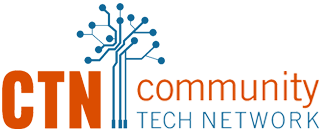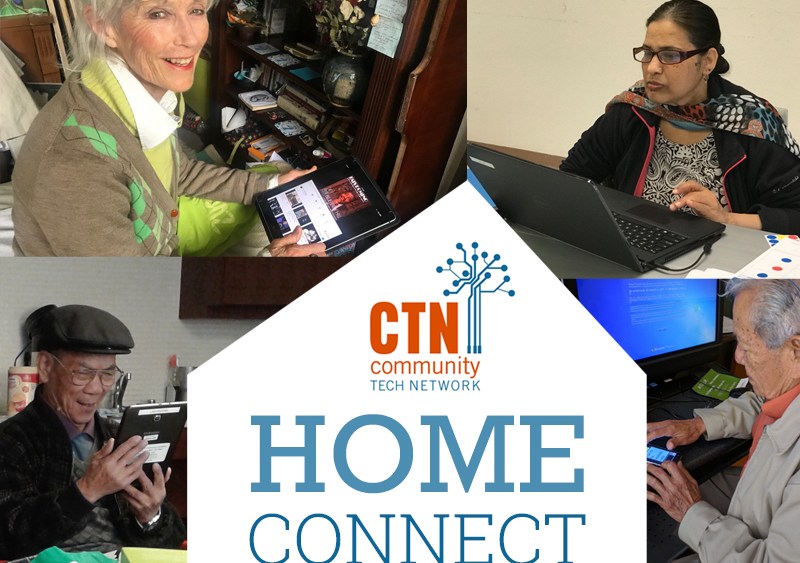CTN Takes Action to Ensure Continuity of Its Programming
This is our story – a three-part recap of how Community Tech Network’s volunteers and employees, supported by leadership from our board members and financial supporters, changed our focus and quickly reengineered our service delivery model.
When the coronavirus began to impact nearly all aspects of Americans’ lives in early March, it quickly became evident that our world was changing and it was no longer business as usual. Armed with the knowledge that everything must change, CTN joined the ranks of other businesses and nonprofit organizations that began planning for the unknown.
For 12 years, CTN has delivered our digital literacy training programs to low-income and older adults using partner locations such as libraries, community centers, and low-income housing developments. CTN provided paid and volunteer trainers to deliver one-on-one and small-group instruction at the locations most convenient to adult learners. The shelter-in-place order forced us to transition from traditional training facilities in public settings to virtual training to ensure learner safety.
Kami Griffiths, CTN’s co-founder and executive director, had a vision for this delivery format tucked away on her “wish list.” The COVID-19 pandemic provided the opportunity to explore and evaluate the feasibility of this concept utilizing volunteer and paid staff resources. Initial discussions at the senior staff level began immediately and soon extended to include all CTN employees.
Dispersed across the community because of stay-at-home mandates, staff came together via email, phone calls, and video conferencing. Although the program’s overview and design quickly emerged from the collective work of the group, much time was spent in deliberation to define important details of the program. How do we identity our learners? How to ensure they have internet access and an appropriate device? Which screen-sharing software do we use to see what the senior learner is viewing during training sessions? How do we maximize human resources – what are the specific roles of staff and the volunteers? How do we track progress? How do we fund it?
The brainstorming and collaboration produced specific tasks, research opportunities, and to-do lists. Roles and responsibilities were identified and assigned, deadlines and timelines established, and, working virtually, the Home Connect program was refined and ready for initial implementation.
In early April, it was time to engage our community partners for their assistance in identifying potential older adult learners, who remain the most at-risk from the impact of COVID-19. It was also essential that we obtain the commitment of our dedicated and diverse corps of volunteers. These newly titled “digital coaches” would ultimately hold the key to the program’s success and longevity, and it was time to bring them onboard.
Up Next, Part 2 of 3: CTN’s Home Connect Digital Coach Volunteer Task Force
Link to COVID Response Blog #2
Link to COVID Response Blog #3


Comments are closed.